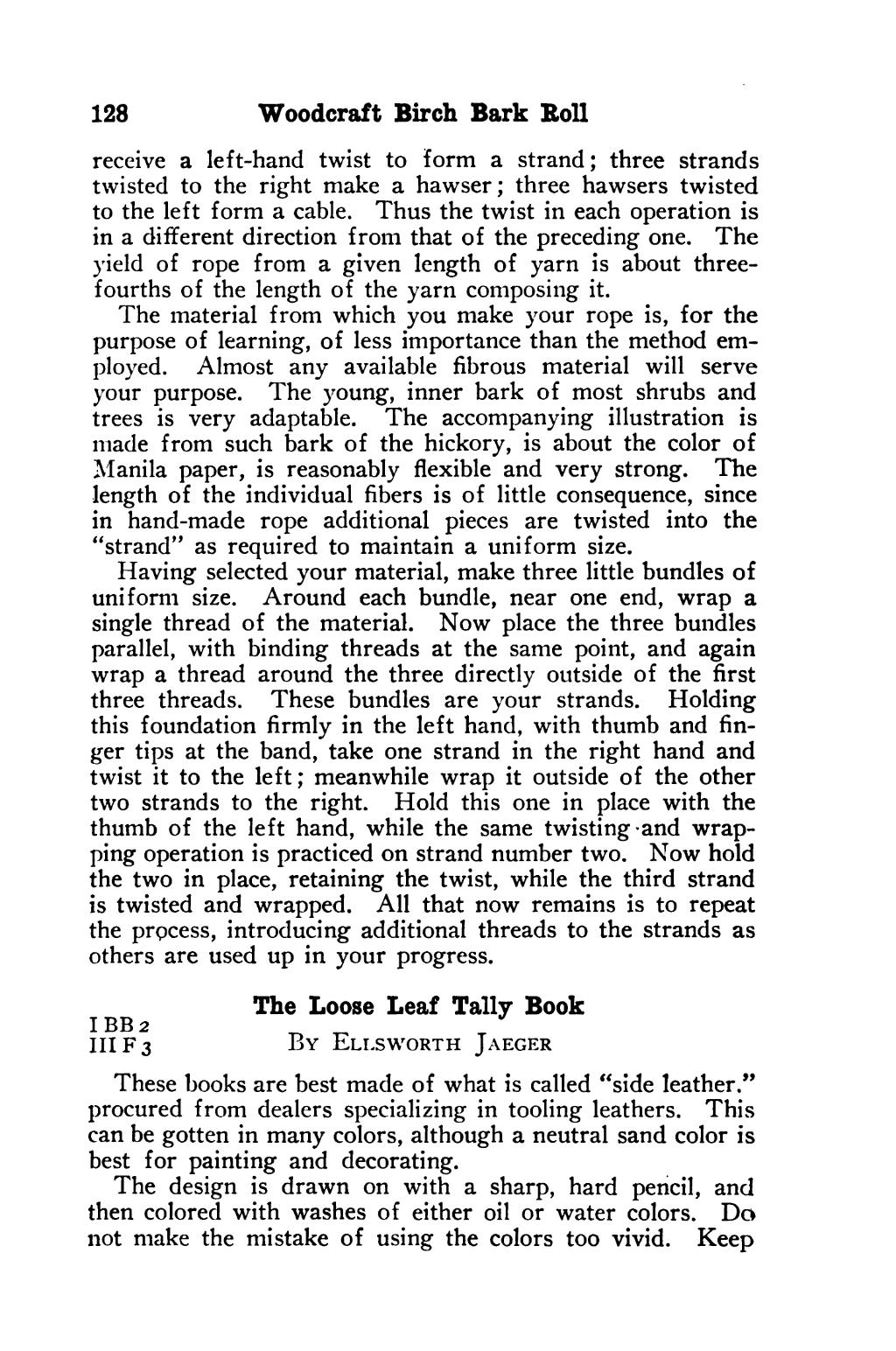128 Woodcraft Birch Bark Roll receive a left-hand twist to form a strand; three strands twisted to the right make a hawser; three hawsers twisted to the left form a cable. Thus the twist in each operation is in a different direction from that of the preceding one. The yield of rope from a given length of yarn is about three- fourths of the length of the yarn composing it. The material from which you make your rope is, for the purpose of learning, of less importance than the method em- ployed. Almost any available fibrous material will serve your purpose. The young, inner bark of most shrubs and trees is very adaptable. The accompanying illustration is made from such bark of the hickory, is about the color of Manila paper, is reasonably flexible and very strong. The length of the individual fibers is of little consequence, since in hand-made rope additional pieces are twisted into the “strand” as required to maintain a uniform size. Having selected your material, make three little bundles of uniform size. Around each bundle, near one end, wrap a single thread of the material. Now place the three bundles parallel, with binding threads at the same point, and again wrap a thread around the three directly outside of the first three threads. These bundles are your strands. Holding this foundation firmly in the left hand, with thumb and fin- ger tips at the band, take one strand in the right hand and twist it to the left; meanwhile wrap it outside of the other two strands to the right. Hold this one in place with the thumb of the left hand, while the same twisting-and wrap- ping operation is practiced on strand number two. Now hold the two in place, retaining the twist, while the third strand is twisted and wrapped. All that now remains is to repeat the process, introducing additional threads to the strands as others are used up in your progress. BE The Loose Leaf Tally Book 2 III F 3 By ELLsSwortTH JAEGER These books are best made of what is called “side leather.” procured from dealers specializing in tooling leathers. This can be gotten in many colors, although a neutral sand color is best for painting and decorating. The design is drawn on with a sharp, hard pencil, and then colored with washes of either oil or water colors. Do not make the mistake of using the colors too vivid. Keep
Stránka:roll 1931.djvu/144
Z thewoodcraft.org
Jmenné prostory
Více
- Více
Možnosti stránky
Verze z 23. 8. 2018, 23:55, kterou vytvořil Keny (diskuse | příspěvky) (→Nebylo zkontrolováno: Založena nová stránka s textem „128 Woodcraft Birch Bark Roll receive a left-hand twist to form a strand; three strands twisted to the right make a hawser; three hawsers twisted to the…“)
Tato stránka nebyla zkontrolována
